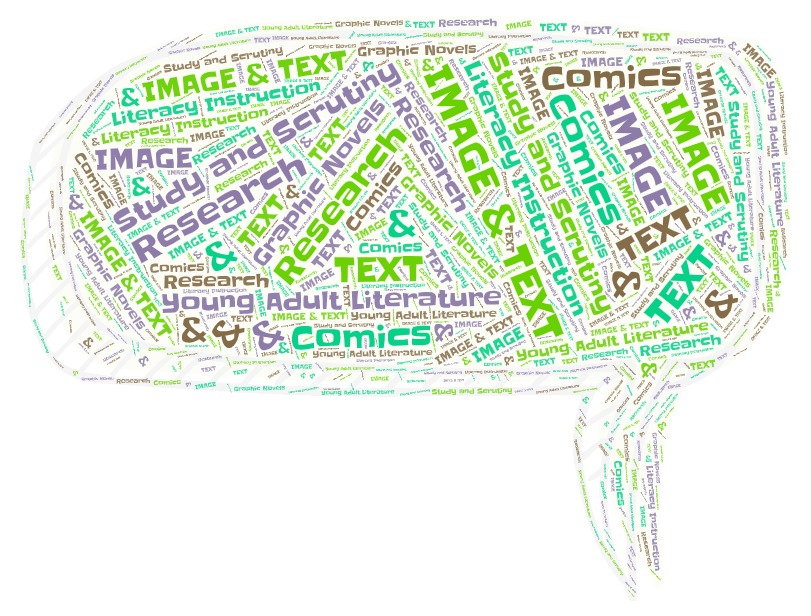Graphic Narratives as Opportunities for Professional Learning
A Sociocognitive Complexity Reading of the Graphic Novel Queen of the Sea
DOI:
https://doi.org/10.15763/issn.2376-5275.2022.5.2.197-219Abstract
In the graphic narrative Queen of the Sea, protagonist Margaret tells the story of her youth on a secret island. Multimodal texts can be used as a platform for academic inquiry, enticing the reader to closely engage with the visual images, text, and the interplay between the two. Studying the sociocognitive complexity of a text invites the reader to utilize theory-of-mind thinking to identify the mental states communicated in the narrative, as well as narratological constructs such as temporality and narrative empathy. As an opportunity for professional learning, this study analyzed the sociocognitive complexity of Dylan Meconis’s graphic narrative Queen of the Sea, using theory-of-mind thinking as an analytic frame for reading and exploring. Findings of this investigation highlight the complexity of graphic narratives and argue for their use as instructional texts in the English classroom.
References
Banasik-Jemielniak, N. (2021). “Unicorn humour isn’t very subtle.” Graphic novels and comics as a potential didactic tool for teaching irony to children: The example of Dana Simpson’s Phoebe and her unicorn, Journal of Graphic Novels and Comics. Published online. DOI: https://doi.org/10.1080/21504857.2021.1946115
Bechdel, A. (2007). Fun home: A family tragicomic (1st Mariner Books ed.). New York: Houghton Mifflin.
Carter, J. B. (Ed.). (2007). Building literacy connections with graphic novels. Urbana, IL: National Council of Teachers of English.
Carano, K. T., & Clabough, J. (2016) Images of struggle: Teaching human rights with graphic novels. The Social Studies, 107(1), 14-18. DOI: https://doi.org/10.1080/00377996.2015.1094723
Charmaz, K. (2006). Constructing Grounded Theory. London: Sage.
Connors, S. P. (2010). "The best of both worlds": Rethinking the literary merit of graphic novels. ALAN, 37(3). DOI: https://doi.org/10.21061/alan.v37i3.a.9
Dallacqua, A. K. (2012). Exploring literary devices in graphic novels. Language Arts, 89(6), 365–378. http://www.jstor.org/stable/41804360
Donnelly, J. (June 25, 2019). A captivating coming-of-age story inspired by the Tudors. The New York Times. https://www.nytimes.com/2019/06/25/books/review/dylan-meconis-queen-of-the-sea.html
Dueben, A. (January 21, 2020). “Everybody is going to get real miserable really quickly”: A
interview with Dylan Meconis. The Comics Journal. https://www.tcj.com/everybody-is-going-to-get-real-miserable-really-quickly-an-interview-with-dylan-meconis/
Freire, P. (2000). Pedagogy of the oppressed. 30th anniversary ed. New York: Continuum.
Gardner, J., & Herman, D. (2011). Graphic narratives and narrative theory: Introduction. SubStance, 40(1), 3–13. http://www.jstor.org/stable/41300185
Gee, J. P. (2014). Forward. In S. F. Serafini, Reading the visual: An introduction to teaching multimodal literacy (pp. xi-xii). New York: Teachers College Press.
Herman, D. (2012). Toward a zoonarratology: Storytelling and species difference in animal comics. In M. Lehtimäki, L. Karttunen, & M. Mäkelä (Ed.), Narrative, interrupted: The plotless, the disturbing and the trivial in literature (pp. 93-119). De Gruyter. DOI: https://doi.org/10.1515/9783110259971.93
Herman, D. (2010). Multimodal storytelling and identity construction in graphic narratives. In D. Schiffrin, A. de Fina, & A. Nylund (Ed.),Telling stories: Language, narrative, and social life. (pp. 195-208). Georgetown UP. DOI: https://doi.org/10.1111/j.1467-9841.2012.00539_3.x
Jimenez, L. M., & Meyer, C. K. (2016). First impressions matter: Navigating graphic novels utilizing linguistic, visual, and spatial resources. Journal of Literacy Research, 48(4), 423-447. DOI: https://doi.org/10.1177/1086296x16677955
Jones, S., & Woglom, J. F. (2014). Dangerous conversations: Persistent tensions in teacher education. The Phi Delta Kappan, 95(6), 47–56. http://www.jstor.org/stable/24374513. DOI: https://doi.org/10.1177/003172171409500611
Keen, S. (2006). A theory of narrative empathy. Narrative, 14(3), 207–236. http://www.jstor.org/stable/20107388. DOI: https://doi.org/10.1353/nar.2006.0015
Keen, S. (201 1). Fast tracks to narrative empathy: Anthropomorphism and dehumanization in graphic narratives. SubStance, 40(1), 135–155. http://www.jstor.org/stable/41300192. DOI: https://doi.org/10.1353/sub.2011.0003
Kelly, J., & Taboada Barber, A. (2021). Interactive read-aloud instruction with narratives: Teaching inferencing using theory of mind. TEACHING Exceptional Children, 54(2), 106–115. DOI: https://doi.org/10.1177/0040059920987876
Kress, G. (2003). Literacy in the new media age. London: Routledge.
Meconis, D. (2019). Queen of the Sea. Somerville, MA: Walker Books.
Moeller, R. A. (2016). A Question of legitimacy: Graphic novel reading as “real” reading. Journal of Adolescent & Adult Literacy, 59(6), 709–717. http://www.jstor.org/stable/44011333. DOI: https://doi.org/10.1002/jaal.501
Moeller, R. A. (2011). “Aren’t these boy books?”: High school students’ readings of gender in graphic novels. Journal of Adolescent & Adult Literacy, 54(7), 476-484. DOI: https://doi.org/10.1598/jaal.54.7.1
Munslow Ong, J. (2016). “I’m only a dog!”: The Rwandan genocide, dehumanization, and the graphic novel. The Journal of Commonwealth Literature, 51(2), 211-225. DOI: https://doi.org/10.1177/0021989415624958
Ripley, D. (2012). Classroom comics: Children’s medium and the new literacy. Interdisciplinary Humanities, 29(1), 99-113.
Smith, J. M., & Pole, K. (2018). What’s going on in a graphic novel? The Reading Teacher, 72(2), 169–177. http://www.jstor.org/stable/26632675. DOI: https://doi.org/10.1002/trtr.1695
Zunshine, L. (2011). What to expect when you pick up a graphic novel. SubStance, 40(1), 114–134. http://www.jstor.org/stable/41300191. DOI: https://doi.org/10.1353/sub.2011.0009
Zunshine, L. (2014). Theory of mind as a pedagogical tool. Interdisciplinary Literary Studies, 16(1), 89–109. DOI: https://doi.org/10.5325/intelitestud.16.1.0089
Zunshine, L. (2019). What Mary Poppins knew: Theory of mind, children's literature, history. Narrative 27(1), 1-29. DOI: https://doi.org/10.1353/nar.2019.0000
Downloads
Published
Issue
Section
License
Copyright (c) 2022 Julianna E. Lopez Kershen

This work is licensed under a Creative Commons Attribution-NonCommercial 4.0 International License.




